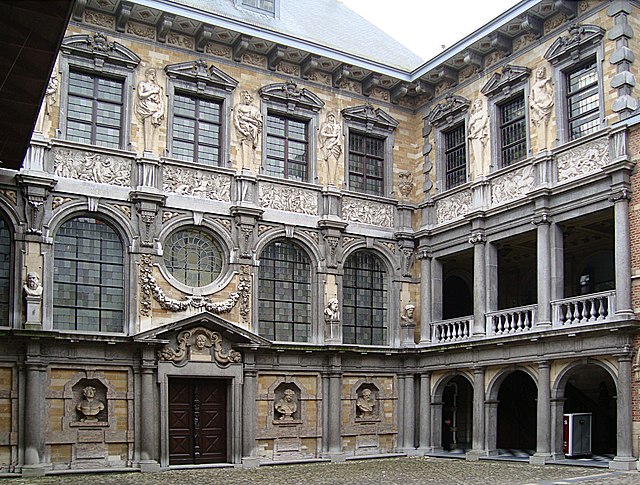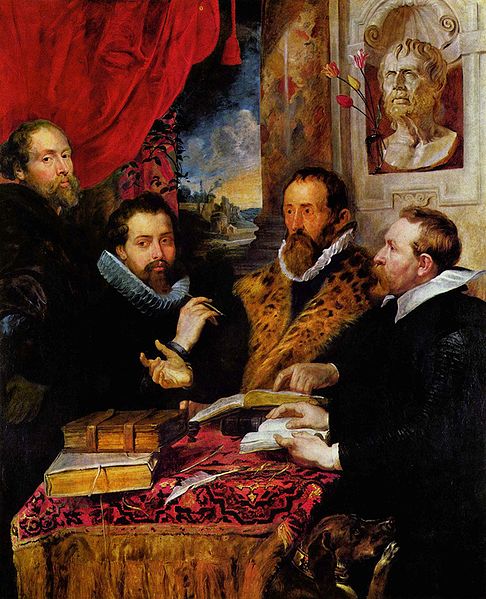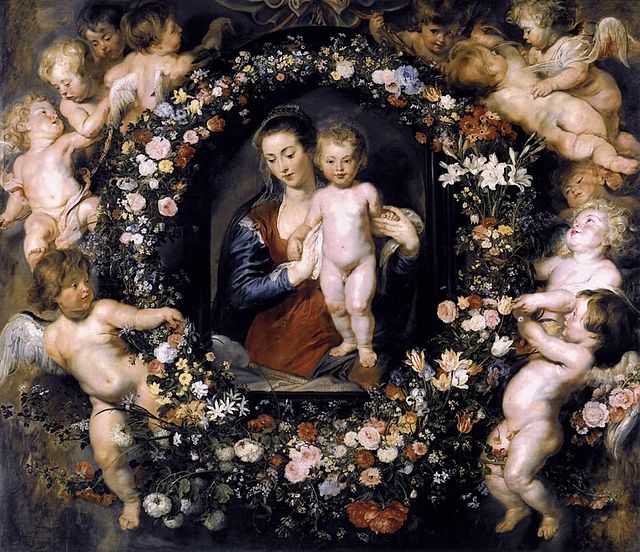The Rubenshuis is the former home and workshop of Peter Paul Rubens (1577–1640) in Antwerp. Purchased in 1610, Rubens had the Flemish townhouse renovated and extended on the basis of designs by Rubens himself. After the renovations, the house and its courtyard garden had the outlook of an Italian palazzo, which reflected the artistic ideals of Rubens. The ensemble is now a museum dedicated mainly to the work of Rubens and his contemporaries.
The Rubenshuis exterior, as seen from the Wapper
The interior courtyard
Portrait of a Woman (Helena Fourment)
Self-portrait
Sir Peter Paul Rubens was a Flemish artist and diplomat. He is considered the most influential artist of the Flemish Baroque tradition. Rubens's highly charged compositions reference erudite aspects of classical and Christian history. His unique and immensely popular Baroque style emphasized movement, colour, and sensuality, which followed the immediate, dramatic artistic style promoted in the Counter-Reformation. Rubens was a painter producing altarpieces, portraits, landscapes, and history paintings of mythological and allegorical subjects. He was also a prolific designer of cartoons for the Flemish tapestry workshops and of frontispieces for the publishers in Antwerp.
Self-Portrait, 1623, Royal Collection
Self-portrait with his brother Philip, Justus Lipsius and Johannes Woverius, 1597
The Fall of Phaeton, 1604, National Gallery of Art, Washington, D.C.
Madonna on Floral Wreath, together with Jan Brueghel the Elder, 1619








